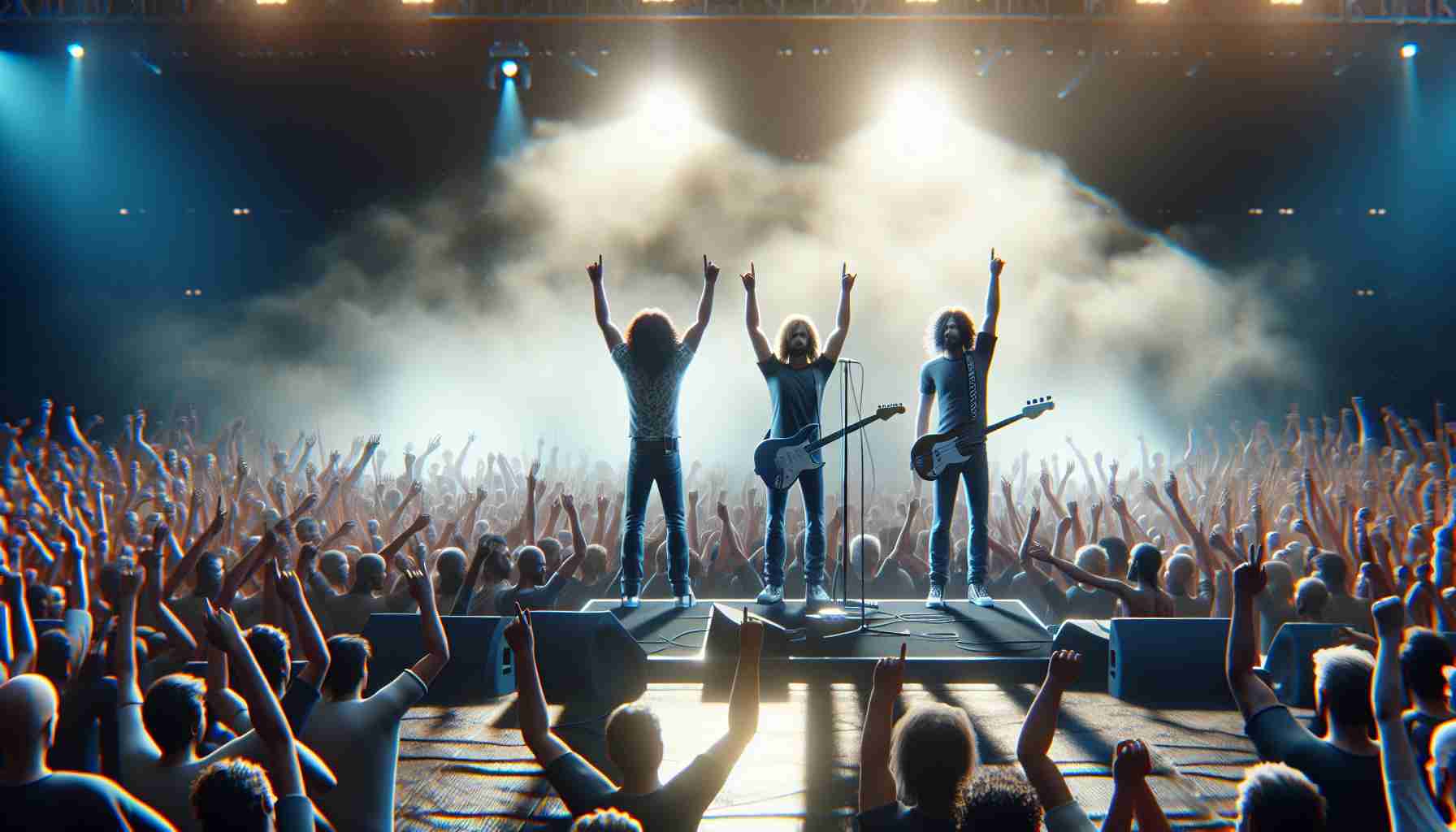Electric Light Orchestra (ELO) has announced their farewell concert to be held at Hyde Park, London next year. However, the recent conclusion of their U.S. tour leg, “Over and Out,” has stirred a bit of controversy among fans due to the band’s use of artificial intelligence in their live shows.
During the U.S. concerts, AI-generated visuals were employed as backdrops, which prompted varied reactions among the audience. Movie director Eddy Ray shared his disapproval on Instagram, suggesting that the use of AI in art compromises jobs for human animators, potentially replacing band members themselves. Ray’s post sparked debate, with many fans echoing his sentiments, questioning the impact on artistic integrity.
On platforms like the r/ELO Subreddit, opinions were sharply divided. While some fans criticized the AI visuals for lacking quality, reminiscent of outdated surrealist art, others believed it was a novel approach that added to the experience. One fan pointed out that ELO’s frontman, Jeff Lynne, at 76, might be disconnected from modern discussions about AI and probably found it a fascinating innovation.
Despite the contention, there were concertgoers who enjoyed the AI designs, describing them as “fun” and “pretty,” particularly appreciating segments featuring popular songs like “Strange Magic” and “One More Time.” The debate continues, with many hopeful that the feedback will encourage a shift towards human-crafted visuals for the band’s final performances.
Are AI Visuals the Future of Concert Experiences? Exploring the Implications of Technology in Live Shows
The debate over the incorporation of artificial intelligence in live entertainment is a growing conversation, brought to the forefront recently by Electric Light Orchestra’s (ELO) use of AI-generated backdrops during their U.S. concert tour, “Over and Out.” While the controversy centered around artistic integrity, it raises deeper questions about the role and impact of AI in creative industries.
AI’s Role in Creative Innovation
As technology evolves, AI-driven tools are becoming more prevalent in creative sectors. In music and entertainment, AI can generate stunning visuals that enhance a live performance by tapping into vast libraries of art styles and motions. This innovation offers a new dimension and elevates the concert experience by synchronizing with dynamic stage elements and music.
However, this capability poses a fundamental question: Does AI threaten to overshadow human creativity, or does it act as a supplemental tool to expand artistic horizons? While some fans of ELO found the AI visuals lacking, others appreciated the fresh, experimental approach to concert artistry.
Advantages and Disadvantages of AI in Concerts
One advantage is that AI can produce visuals at a scale and complexity that might be difficult for human artists within the constraints of time and budget. AI can continuously adapt and create on-the-fly, allowing for a unique show each time. This feature can be particularly appealing in live entertainment, where the audience seeks novelty.
On the downside, reliance on AI may reduce opportunities for human artists and diminish the sincerity of the performance, as echoed by critics like movie director Eddy Ray. The sentiment is that the “human touch” in art—which often includes imperfections and idiosyncrasies—might be sanitized by AI’s precision.
Considering the Future: A Balanced Approach?
Could there be a compromise where AI and human creativity coexist harmoniously? It’s possible that AI could handle repetitive or technical aspects, allowing human artists to focus on more nuanced or conceptual elements. This synergy might offer the best of both worlds, maintaining artistic integrity while leveraging AI’s capabilities for enhancement.
Questions for the Future Development of Technology and Humanity
1. Will AI’s role in creative industries lead to increased artistic diversity, or will it homogenize artistic output?
2. How can AI be developed to enhance—rather than replace—human creativity?
As these questions linger, the integration of AI in entertainment continues to be a hot topic of debate. While AI’s use in ELO’s concerts stirred controversy, it also highlighted its potential as a transformative force in live performances.
Exploring these innovations and finding the right balance will be crucial in shaping the future of entertainment technology while ensuring humanity’s creative essence remains at its core.
For those interested in more on technology’s intersection with creativity and society, visit Forbes or Wired.
